Update #21: 2024 Monitoring report / October 4, 2024
At the last weekend of August 2024, we completed most of the survival rate monitoring for our planting areas in 2022 and 2023. The survival rate for the 2022 planting area is 78.48%, and for 2023 it is 56.40%. These results are less positive than last year’s, especially for the 2023 area. Still, these results reflect extremely hot and dry weather during 2024.
Updates
15th November 2024 - Update map and monitoring results for 2021, 2022-A, 2022-AdZM2 and 2023-B planting areas.
Thanks for your help Climate caravan, Mirlo & Joset!
Monitoring is not an easy task, especially when one needs to walk up and down over 16 hectares of steep hills and rocks. But this year, we had help! It took 5 people whole weekend to establish new monitoring points and count trees in all the areas. Especially establishing the monitoring points is quite demanding as one needs to prepare and transport all the materials to the monitoring points. It was a great weekend with an amazing company, good weather and great conversations!
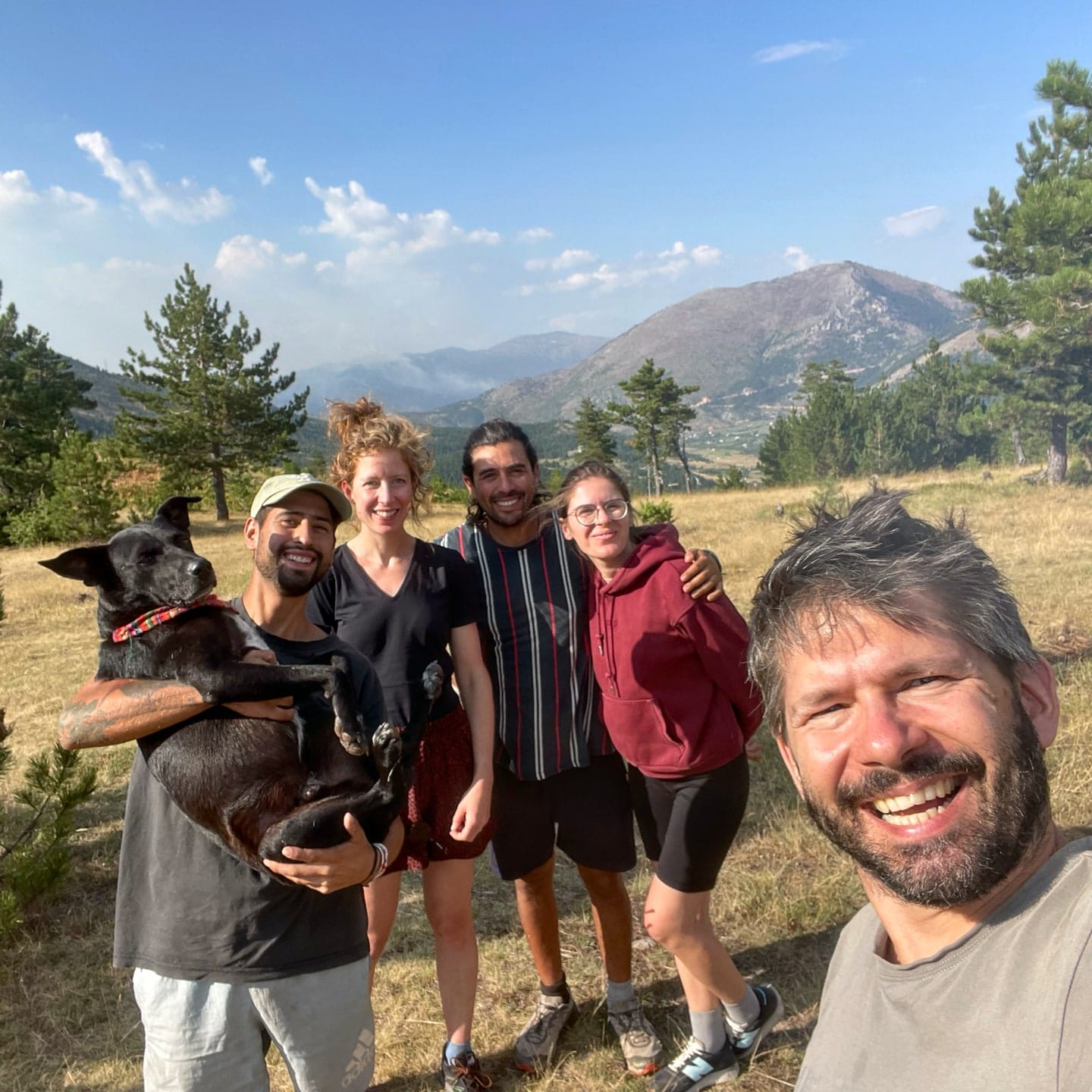
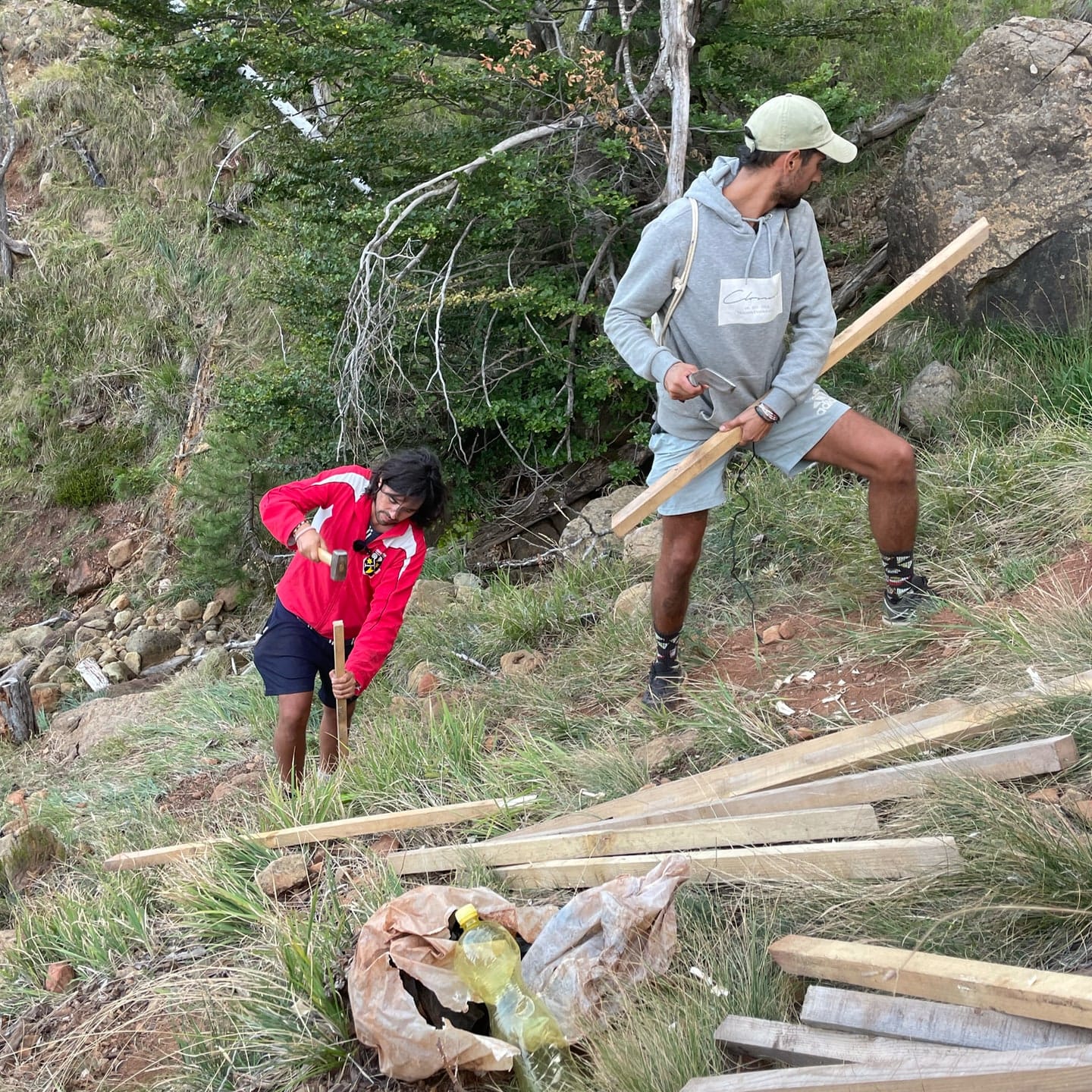
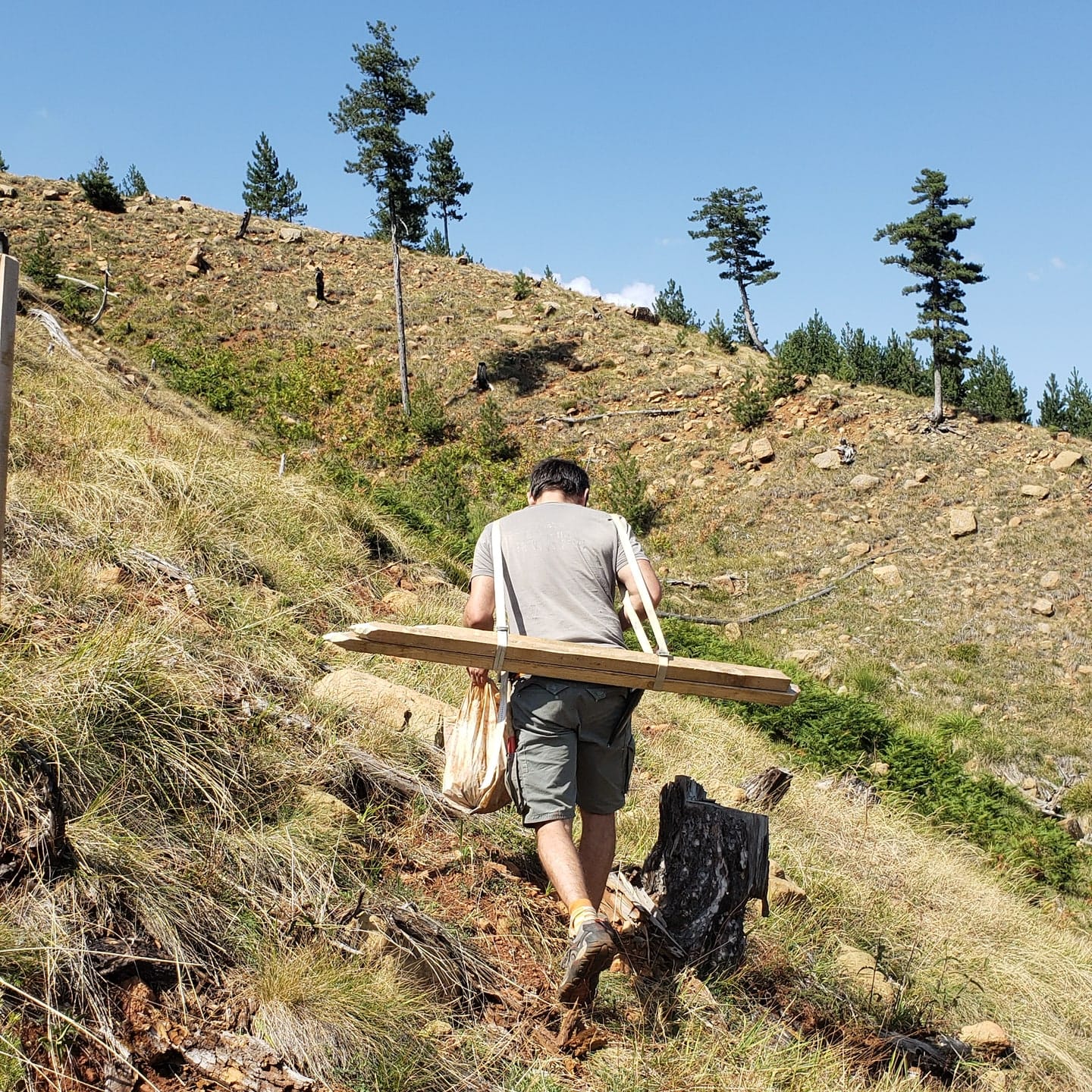
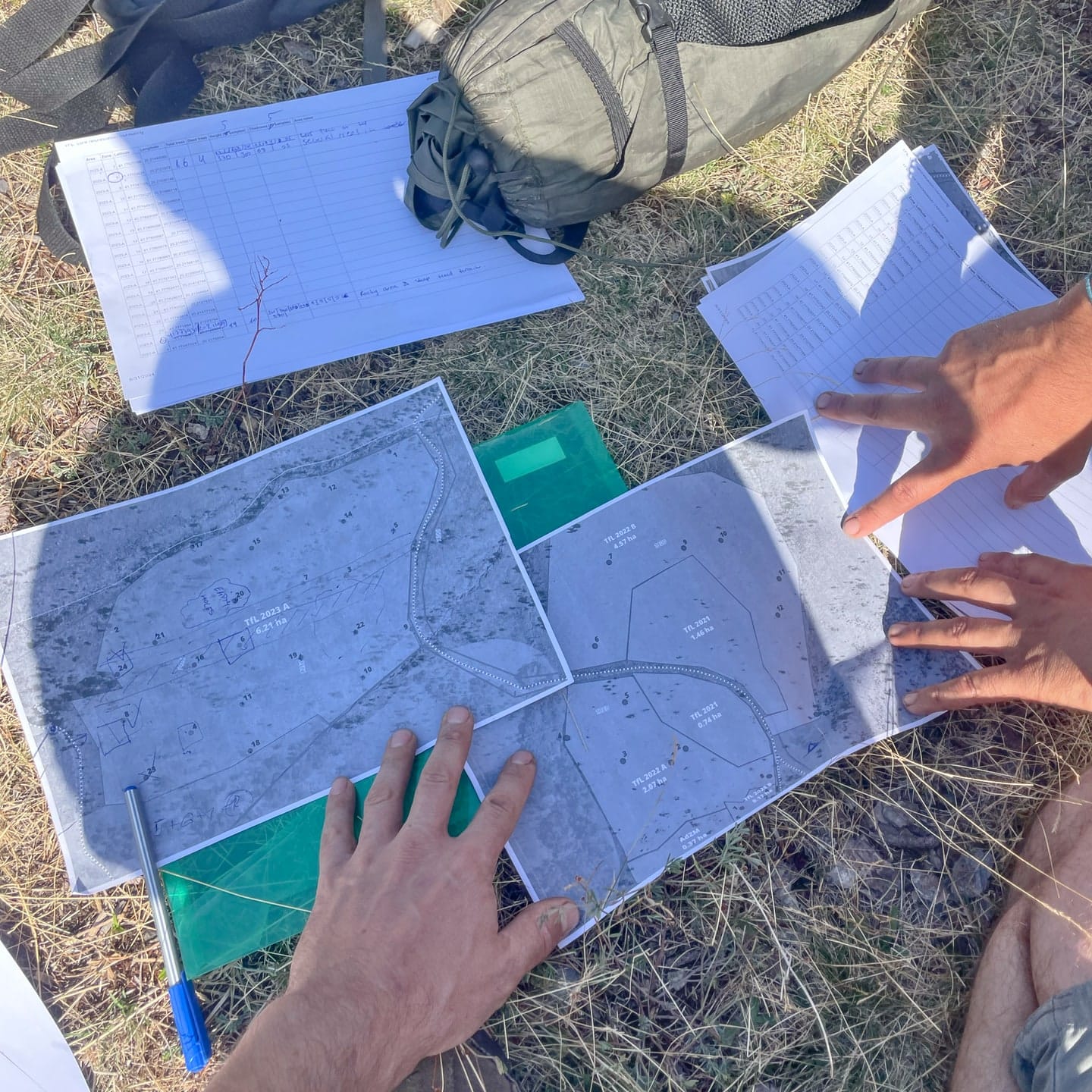
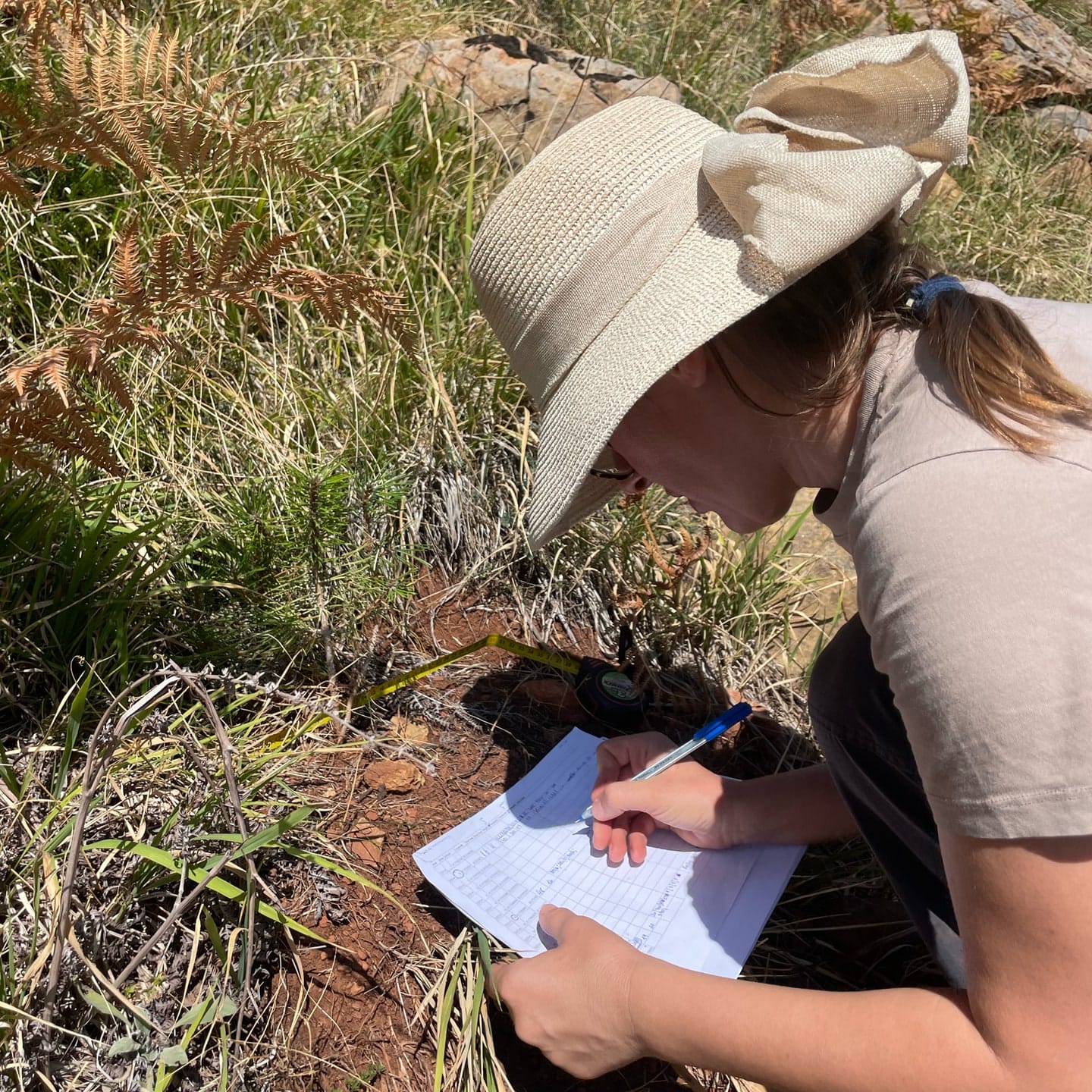
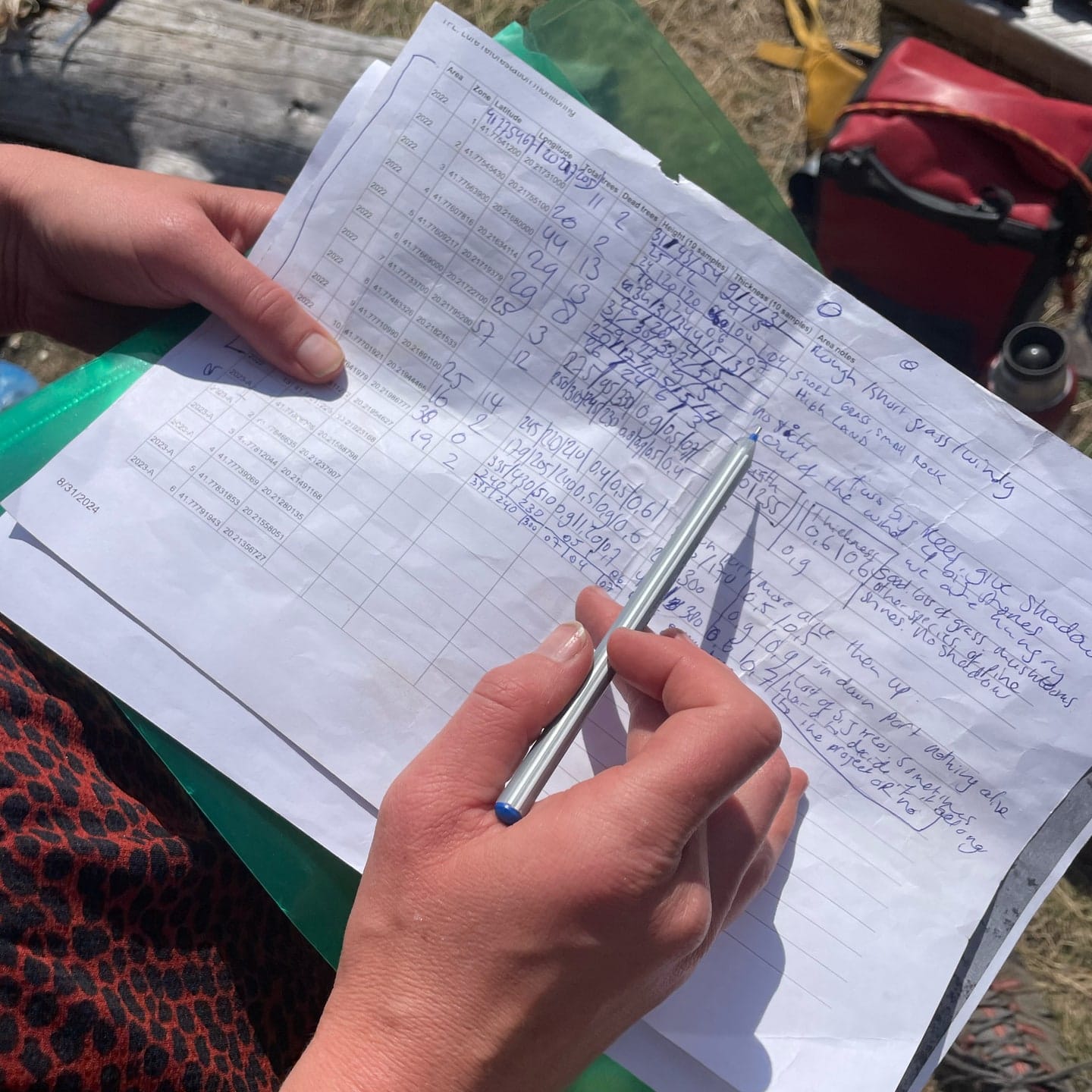
Monitoring results
Below your can find results of the monitoring event for the 2022 and 2023 planting areas, which we executed last weekend of August 2024. We have established new monitoring points for the 2023 planting area, repaired the ones in the 2022 area, and done the counting. For detailed information about our monitoring methodology, please refer to the How are we monitoring? section on the Reforestation project page.
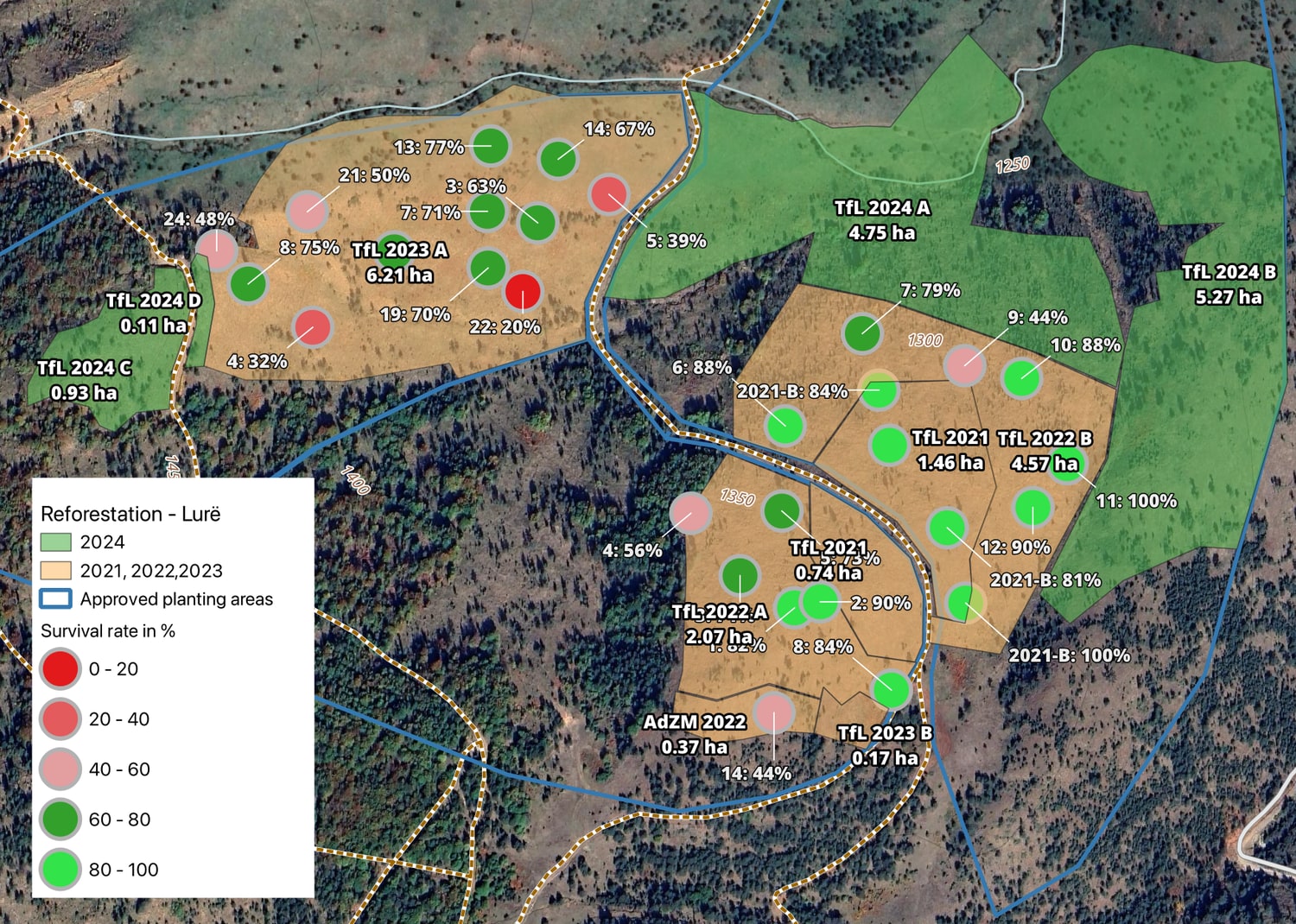
56.40% survival rate for 2023 area
Unfortunately, the survival rate for the 2023 planting is much lower than we would like, especially compared to the 84% for the 2022 area in its first year. The results are, however, not completely surprising given the incredibly hot and dry summer in 2024 and the terrain of the planting site.
The main problem for the trees planted last year was drought in 2024. Both big streams running through the planting area dried out in early summer, and there was little rain to replenish the water during the summer. This problem was compounded by the steep, rocky terrain, where it’s hard for water to saturate the soil, and the east-facing orientation, which means constant exposure to the sun.
Arid summer surfaced the second problem: competition of multiple saplings for water. Our planting material had multiple trees, between 3 and 5 saplings per bag. This is due to standard practice to sow multiple seeds per bag so that the nursery ensures each bag has at least 1 tree. Usually, this is not an issue; for example, the 2022 area used the same planting material. However, when water resources are limited, this quickly becomes a big problem, as we saw this year.
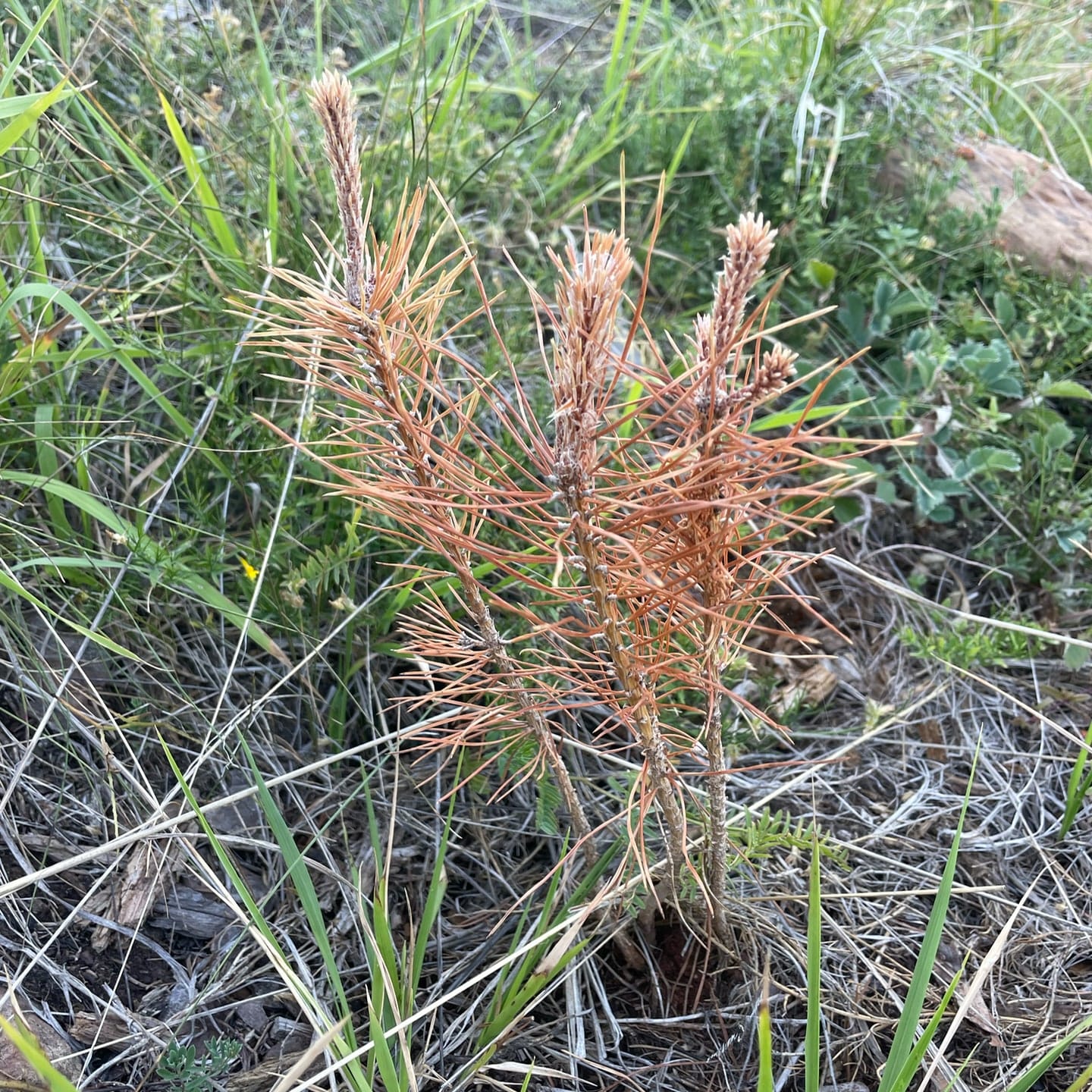
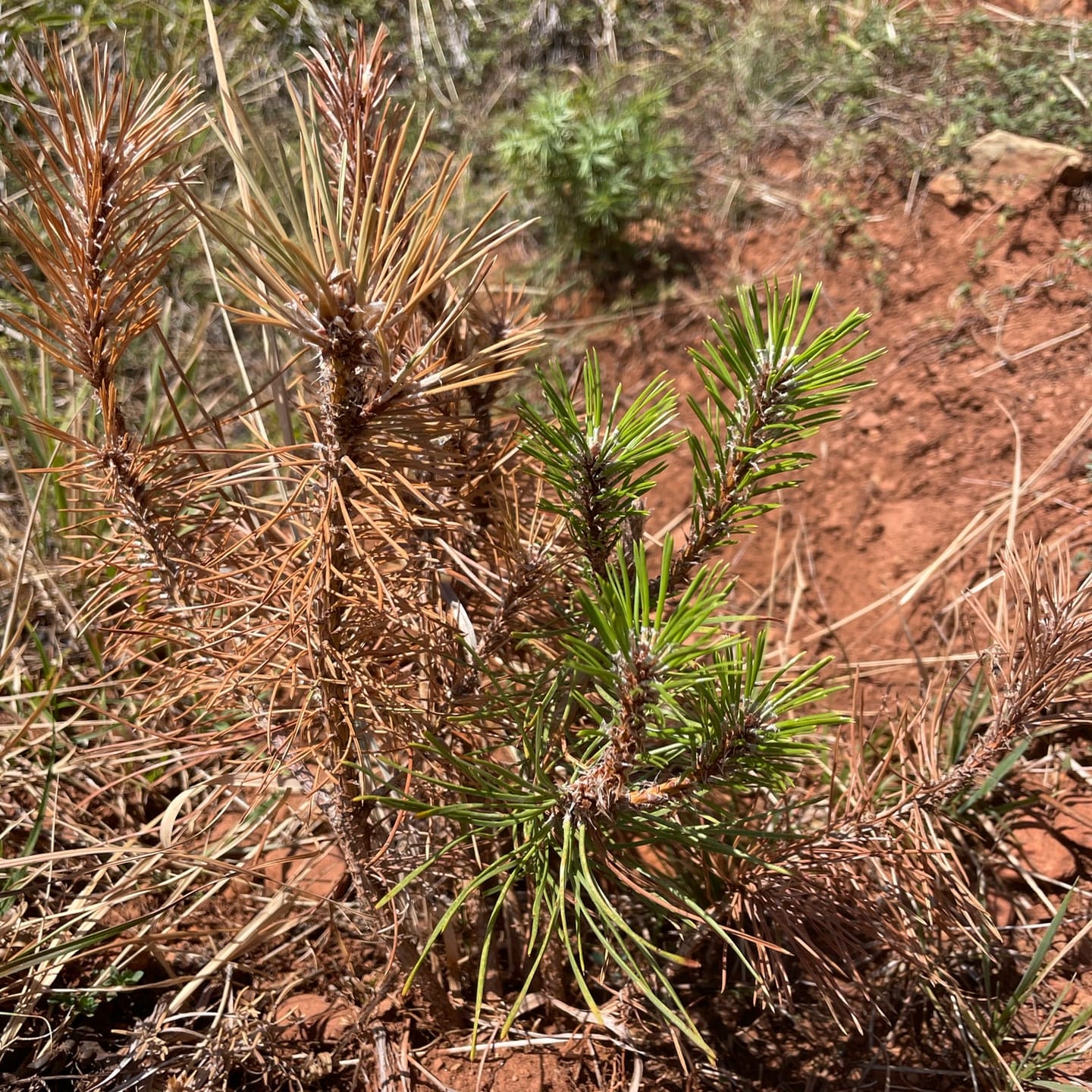
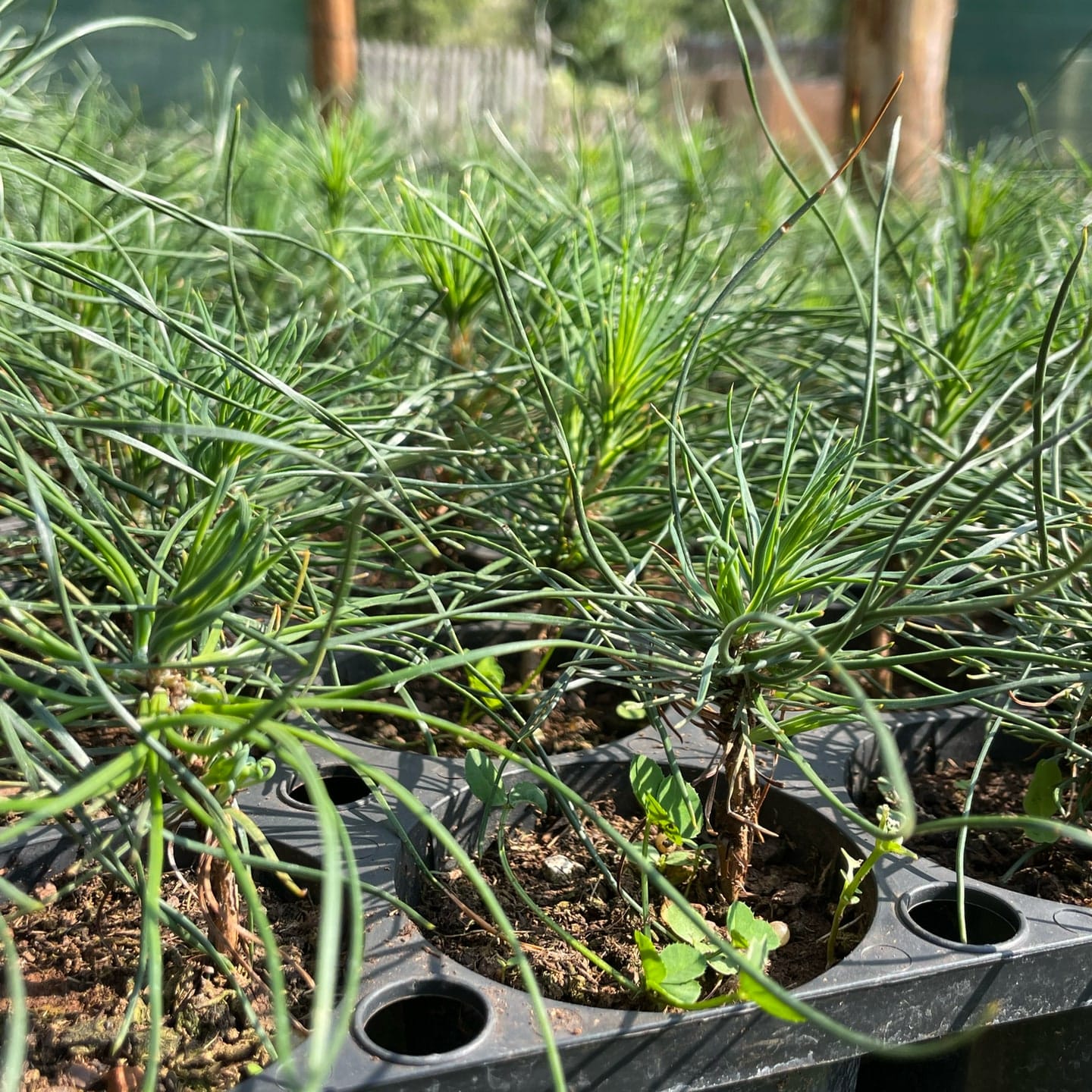
The monitoring points which have a good survival rate share the same elements:
- They are all either in the shade of bigger trees or other vegetation;
- They have enough topsoil with vegetation;
- They have a single tree per hole.
With this information, we can see what changes would be beneficial for better results, and we are making changes for the 2024 planting season, see below.
78.48% survival rate for 2022 areas
This is the second year of monitoring for the 2022 areas, and the results are positive, with just a 6.17% decrease in the survival rate compared to the 2023 monitoring. The survival rate is also more evenly distributed across the planting area (in contrast to the 2023 area). Also, the results per monitoring point are similar/expected compared to the previous monitoring year.
The 2022 planting area generally has more favorable terrain with fewer rock formations, slopes, and a north/northeast orientation. This last point is important, considering sun exposure and water availability.
Survival rate for 2021 & 2022 AKZM/AdZM areas
We have previously monitored the 2021 area and other smaller areas by counting each individual tree. However, due to growing vegetation and to unify the monitoring methodology, we applied the sample plot method to these areas, this year.
88.25% survival rate for 2021 areas
As seen on the map above we established 4 monitoring sites in the lower part of the 2021 planting area. We still need to complete the upper part before the winter which will affect the results. The results for the 2021 are will be lower once we complete last 3 monitoring points.
The results for the lower part are very positive at 88.25% survival rate. However, we are aware that the upper part of the planting area does have much less survival rate. This is due to the fact that we planted certain portion of the are using 1 year old Black pine saplings, which were too young to survive harsh winter.
43.91% survival rate AKZM & AdZM Dibër 2022 area
The planting area with the trees provided by the AKZM and AdZM (0.37ha, 542 saplings) was executed on 8th November 2024 using the manual count method.
The lower results in this area can be attributed to the saplings. These Black pine saplings were 4 year old, grown in the nurseries in Lac and due to their very tall size the saplings are prone to physical damage during winters. 2025 will be end of 3 year monitoring period for this area at which point we will be taking a decision on the further approach in this area.
Lessons and “Is the 2023 planting area a failure?”
It is disappointing that the survival rate in last year’s area was 56%. It would be easy to say that it’s a result of climate change and that we can’t do much about it. That would not be fair. Sure, 2024 was incredibly hot and dry, but we think there are ways to improve our results.
For the 2024 planting season, there are important changes which will positively impact the resilience of the planted samplings:
-
We will be using 8,800 trees grown in our tree nursery. These trees are not only acclimatized to the local climatic conditions but, more importantly, grown individually and will be planted separately. Higher quality planting material will (we hope) improve their survival chances significantly.
-
We will introduce new measures to capture moisture around the tree, such as using vegetation or coarse mulch to minimize evaporation.
Trees for Lurë is not only a reforestation project; on the contrary, we have many activities in Lurë during the year, broadening our impact on the local community and the area. Therefore, results from one planting are disappointing, but the positive impact we had can’t be taken away by it.
We have contributed almost 50% of our budget to support local families in Lurë. We established tree nursery which provides additional job opportunities for local women, but more importantly, produced 8,000 Black pines for the 2024 planting season and another 10,000 is growing for 2025. We provide educational activities for schools and visitor groups and collect valuable weather and monitoring data.
We have contributed almost 50% of our budget to support local families in Lurë. We established a established tree nursery which provides additional job opportunities for local women. Still, more importantly, we produced 8,800 Black pines for the 2024 planting season, and another 10,000 are growing for 2025. We provide educational activities for schools and visitor groups and collect valuable weather and monitoring data.
All this is part of our project in Lurë, a much wider engagement than just reforestation.
On behalf of the whole team,
Pavel
Archive
Update #28: Lurë Fire Emergency update! / July 25, 2025
Lurë-Dejës Mt. National Park suffers huge forrest fire in July 2025
Update #27: Replanting and replacing trees / May 25, 2025
Replanting dead saplings in the 2023 planting area is part of the Spring season in Lurë.
Update #26: Starting the 2025 season! / March 30, 2025
Starting the 2025 season!
Update #25: Trees for Lurë becomes Trees for Albania / March 24, 2025
Trees for Lurë is evolving into Trees for Albania, marking an exciting new chapter in our journey.
Update #24: Sustainable reforestation network in Albania / March 6, 2025
We were awarded grant from the GreenAL program to implement project Sustainable reforestation network in Albania
Update #23: Join our team at Trees for Lurë! / February 12, 2025
We are looking for young professionals to join our team at Trees for Lurë!
Update #22: Overview of the 2024 / January 1, 2025
11,470 trees, education activities, NGO and institutional cooperations, new greenhouse and so much more in 2024!
Update #21: 2024 Monitoring report / October 4, 2024
Year 2024 was incredibly hot and dry, which had negative impact on the survival rate, we have 56.4% for the 2023 area, we are making changes for the 2024 season!
Update #20: Researcher from UK & week of meetings / July 7, 2024
Week of meetings with institutions and NGOs with researcher Stephen Haywood from the UK
Update #19: Overview of the 2023 / January 28, 2024
Overview and Brochure of our work in 2023, what a busy year it was!
Update #18: 10,081 planted in Autumn 2023 / December 15, 2023
We planted another 10,081 trees in 2023 bringing total number up to 22,793!
Update #17: Organising school events in 2023 / December 7, 2023
Organising school events in 2023
Update #16: Dorjan Bulku leaving Trees for Lurë / July 10, 2023
Dorjan Bulku decided to leave the project and focus on new exciting opportunities.
Update #15: Preparing seeds of Pinus nigra, Pinus peuce and Abies alba for planting / April 11, 2023
Seeds to grow 11 000 seedlings in our nursery are being prepared.
Update #14: Planting 10 000 trees!!! / October 17, 2022
10 000 trees! That’s pushing our effort to the next level!
Update #13: 78% survival rate in the 1st year / September 13, 2022
78% survival rate, issues we enountered and lessons learned.
Update #12: Partnerships, Tree Nursery & Spring planting / May 25, 2022
Partnerships, Tree Nursery & Spring planting
Update #11: Finance 2019–2021 / January 27, 2022
How did we use donations in years 2019–2021?
Update #10 / October 25, 2021
Choosing the right planting material and supplier.
Update #9 / October 1, 2021
We dug 2550 holes! AdZM project changes, local community support and new ways to donate.
Update #8 / September 21, 2021
Green light for 2500 trees, new species, new area and seeds!
Update #7 / July 20, 2021
Snow in late May, paperwork and plans for the Autumn 2021.
Update #6 / May 20, 2021
We are back! The 1st event of 2021 takes place 28th-30th May, we are planting 2 500 trees in Lurë!
Update #5 / April 21, 2020
First, there was an earthquake, and now we have COVID-19 global pandemic
Update #4 / December 16, 2019
Earthquake, why we planted 51 trees and What’s next?
Update #3 / November 26, 2019
Earthquake, 2019 canceled, earthquake relief volunteering
Update #2 / November 24, 2019
More volunteers and donors, getting ready for next week, Help the Child! update and TV, Radio, Czech Embassy.
Update #1 / November 15, 2019
Welcome Scout Tirana 1, Make child happy!, new team members, stickers and exciting partners.